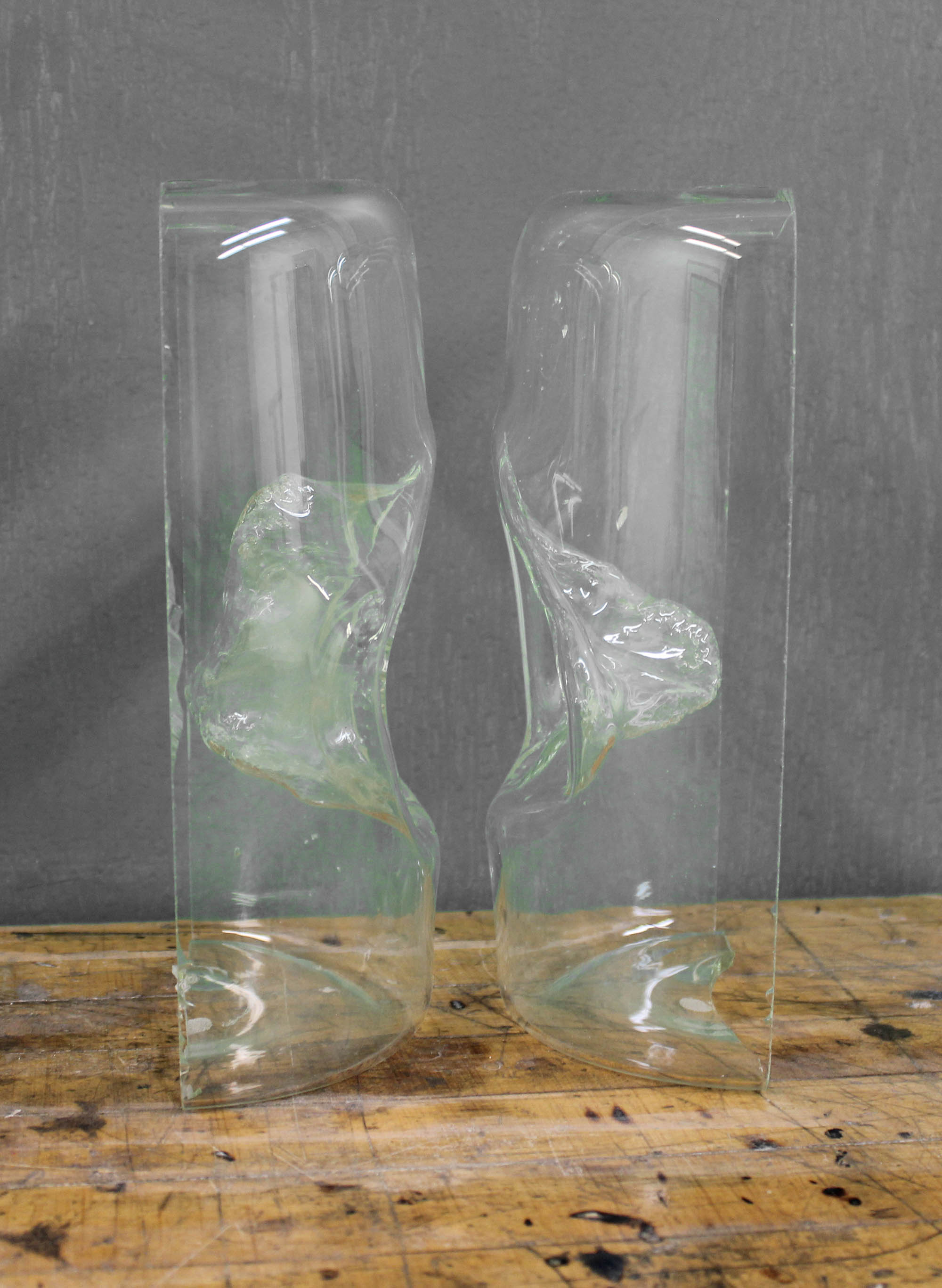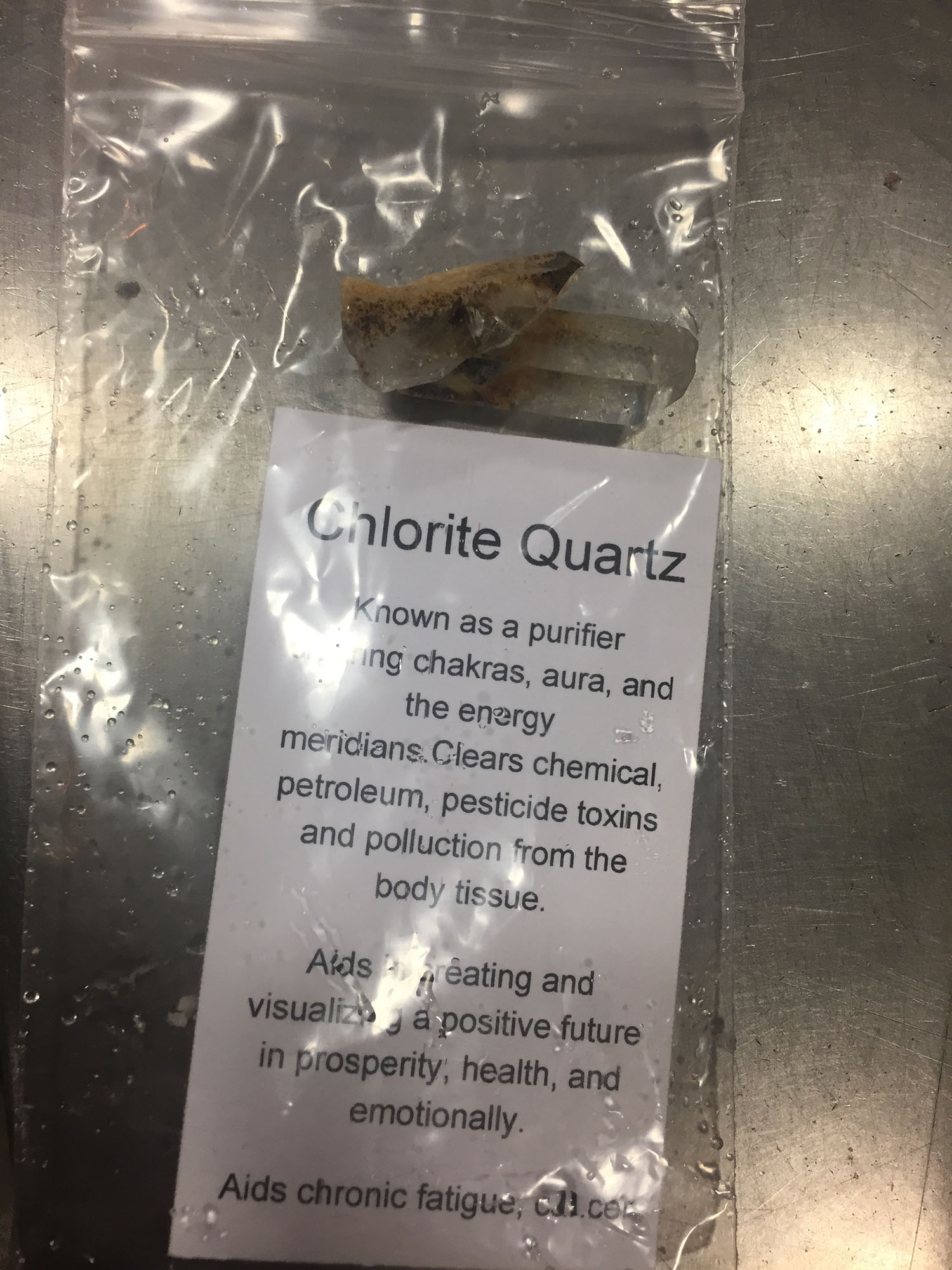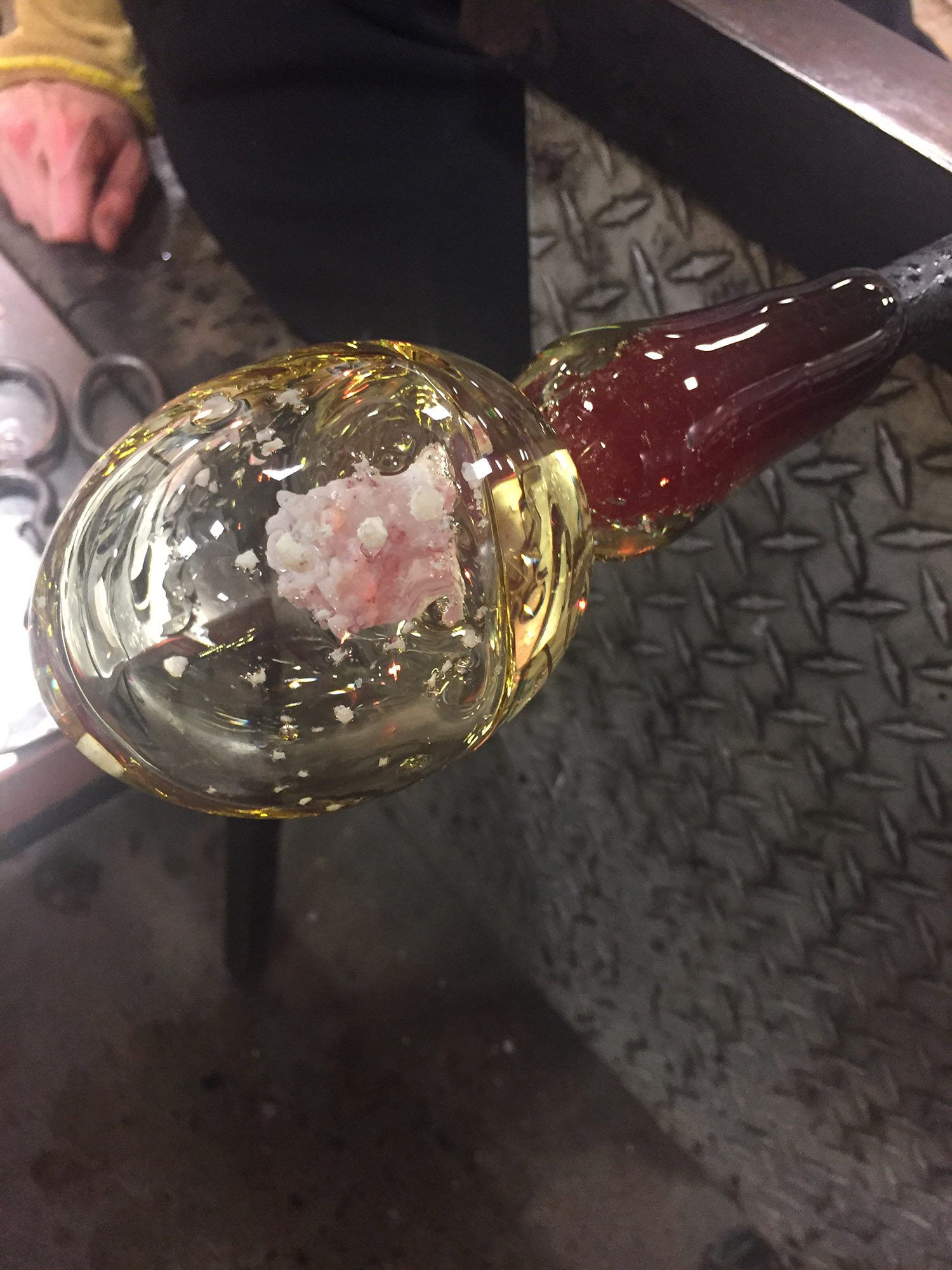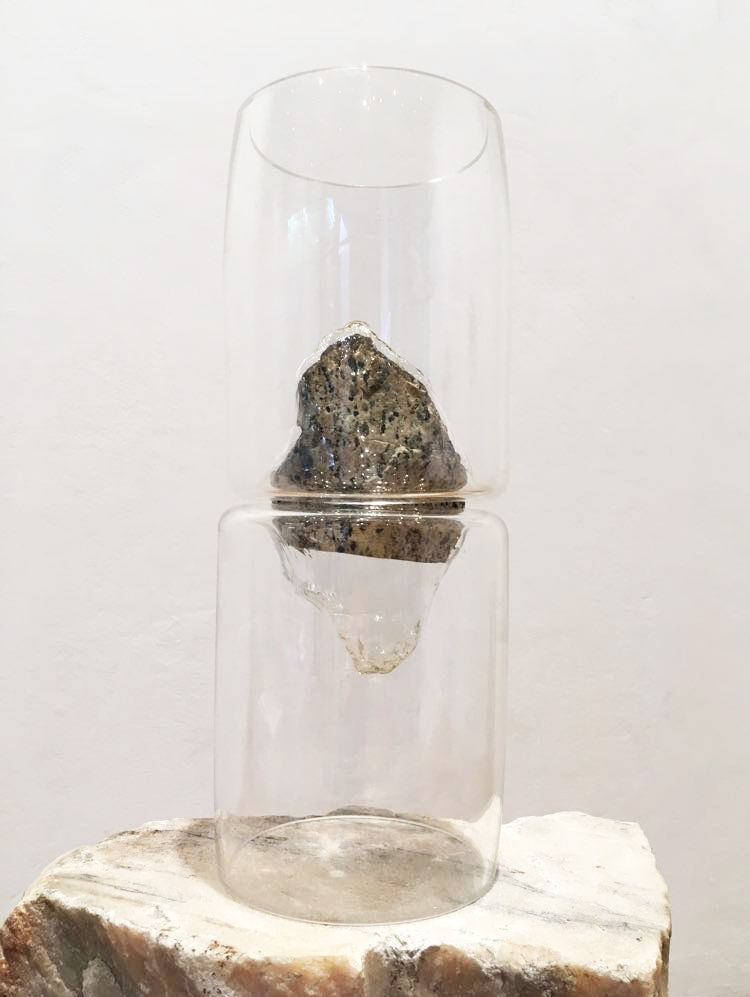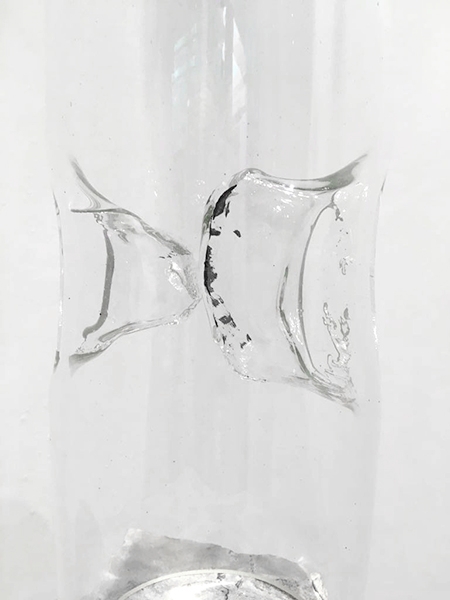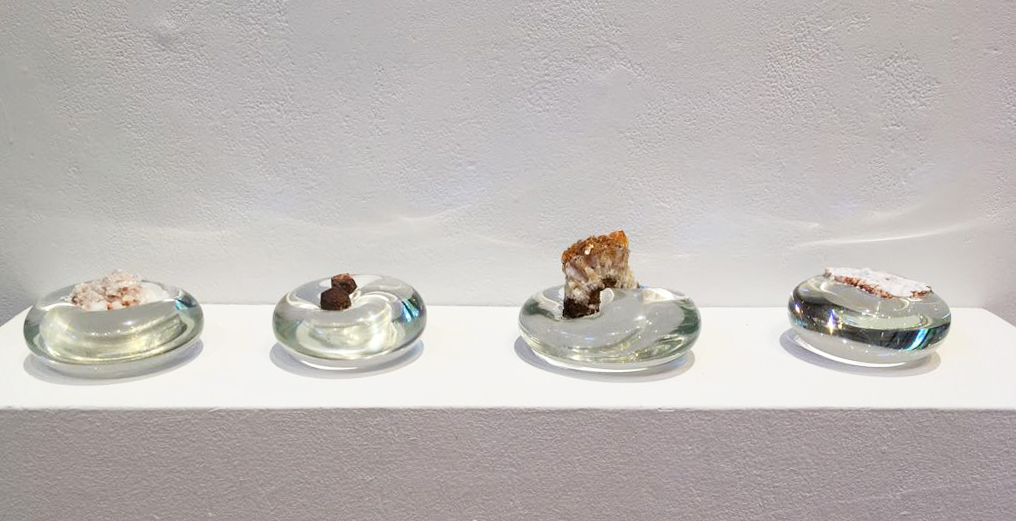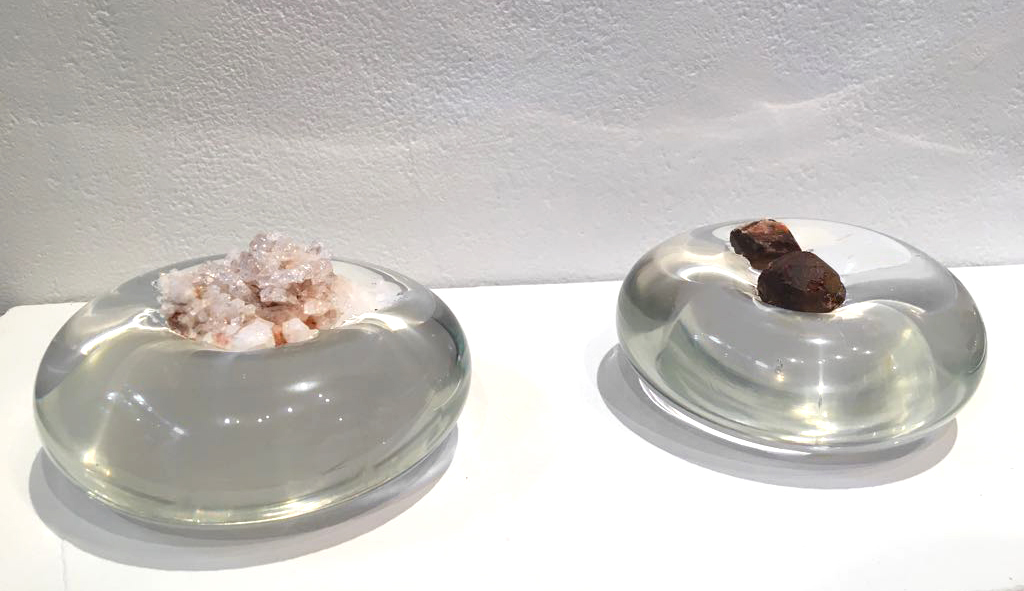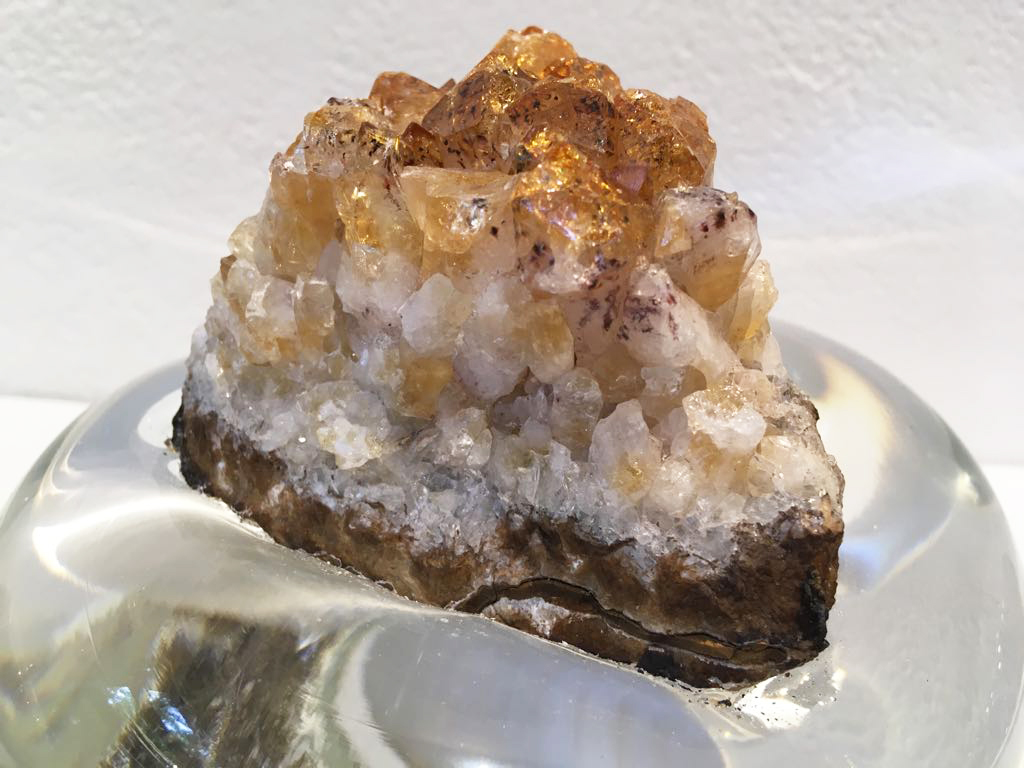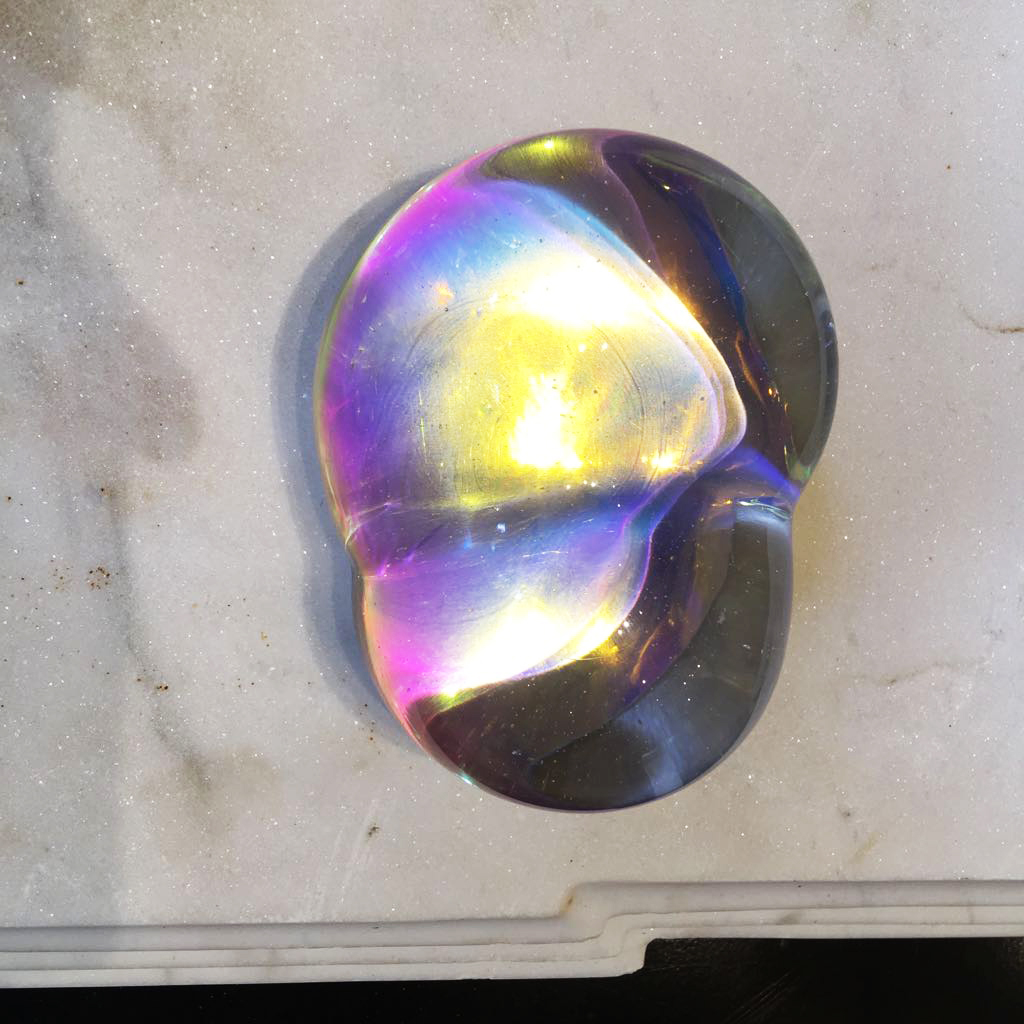I have been working with rocks for a number of years now and recently started dedicating more time to the project. My investigation into understanding my fascination with these mute and ineffable objects is still very broad, yet beginning to focus on expression questions of identity, status and place through the rock, gem and stone material choices.
So what is the difference between a rock and a stone?
Rock is raw material, Stone usually implies human shaping or human use. It can also be used to describe naturally produced fragments of rock larger than a cobble.
The Oxford English Dictionary (OED), lists as the first definition for rock “A large rugged mass of hard mineral material or stone.” Its first use comes from Old English, dated at 950-1100. The OED defines stone as “A piece of rock or hard mineral substance of a small or moderate size,” first used in 825.
The word stonerock, defined as “A pointed or projecting rock, a peak, a crag; a detached mass of rock, a boulder or large stone,” predates either of the singular words stone or rock. Stonerock, or stanrocces, as it was spelled, dates from the Early Old English, used from 600 to 950.
In January this 2018 I was invited as a visiting artist to Bowling Green State University and the College for Creative Studies ( BGSU and CCS) followed by a week at the University of Texas Arlington ( UTA). There I did workshops with the students and presented lectures on the human relationship to rocks and stone and its use in different art practices. Below are some examples from the presentations given to the students. The specific focus of these presentations was of the raw rock material not carved stone sculpture or utilitarian object, which is a whole topic in itself.
At BGSU, the first place I visited I was greeted in an open area between buildings by this wonderful contemporary menhir, that serves the students as a graffiti platform.
At BGSU and CCS I was able to start working on some tests, to combine glass and rocks. The explorations below were done in the course of 5 days. Most rocks I gathered from outside, with a particular interest in the quarried stones. The glass was free formed, mold blown into simple wood and drywall molds as well as hot blow molds were used.
The students received some of the reading materials I had used for my research. Each of them speaks to different human relationships with rock materials.
Details on the rare earth frontier by Elizabeth Knafo ( Cabinet Magazine, Issue 63 The Desert Spring 2017 ), is of particular interest to the glass students because of our use of rare earths for the creation of glass colors. The article highlights the economy of poverty and how the mining industry and capitalism reinforces the exploitation of the land which as well is carried on the backs of the locals.
Colors / Sienna by Tif Sigfrids ( Cabinet Magazine, Issue 63 The Desert Spring 2017 ), another article from the same Magazine and the same Issue, that talks about the significance of the color Sienna, an earth pigment and its history, going back to the first human made art in cave paintings, where ground up rock as the paint is applied to rock, the cave surface. It portrays rock as the original art material.
In the Interview of Tony Cragg by Jon Wood is a section titled “ Material”, where Tony Cragg talks about “appropriate materials” in reference to how well their characteristics lend themselves to various meanings we want them to carry forth.
Menhire in Deutschland, by Johannes Groht, 2013, is a book, which I found in the Natural History Museum in Halle, Germany. Its a collection of all the in Germany existing Menhirs or Standing Stones, their location, Mythology, appearance in History, local significance and appearance.
Rock and Hawk: A Selection of Shorter Poems by Robinson Jeffers Hardcover, 1987. Each poem deals to a degree with rocks, geology and stones juxtaposed by moving creatures and weather. The rock is used a signifier for stability, place and time but also for monstrosity and indifference.
At UTA I focused on exploring the compatibility of a variety of gems. I was mostly making solid inclusions, although a number of them inflated. To my surprise almost all of them didn’t break in the annealing. While looking at them under the polariscope I noticed the the quartz in particular didn’t show signs of stress. I know that scientifically glass and quartz are supposed to not be compatible, however the amount of tension between them, even for hollow or thin walled objects I not significant enough to cause breakage.
Finally this fall I have been as a visiting artist at the University of Hawaii, Manoa for the fall Semester. As part of my residency here I was asked to have a show at the University Commons Gallery. The show took place two weeks after I arrived and I consider it very much a work in progress show, as it showed pieces I had created within those two weeks. It was a joint exhibition with Matthew Szosz, titled “half place”
Ten Mount Rainiers
Digital Print, online sourced photographs
Predominant views on a subject, changes and defines the way we remember and perceive an object, person or situation. Living in Seattle I see it from its popular perspective. I averaged Mount Rainier, as seen through the eyes of different people, from different locations, finding its median overall form to generate the average Mount Rainier.
Sixteen highest Peaks
Digital Print, online sourced photographs
Arranged by height the sixteen highest peaks on Earth generate a chaos of undistinguishable features, only allowing the peaks themselves to be recognized against each other. Mount Everest as the highest peak (if measured from sea level) leads the group. However, the highest peak on earth is Mount Chimborazo (if measured from Earths center), Mauna Kea however is the tallest if measured from the base to summit. Taking human reach as a standard for measurement has shaped everything we make and how we judge our environment.
Naturalization-Stone to Rock
Blown glass, cut, found rock
The difference between a rock and a stone is, that a stone is touched and shaped by human hands and a rock is naturally formed, often the size also plays a role in when we call something a rock or a stone. In this case I reimagined the part of the stone that was cut away to help it turn back into a rock, as an act of naturalization. I am currently in the process to become a US citizen, to be “naturalized”. The piece relates to my present status as a legal alien, a not full member of a community.
Making Ends Meet
blown glass, cut, found rock
The two furthest apart ends of a rock were pushed into the hot glass in an effort to create a space where they can come together and meet.
Diorama of impossible marriages
Hot sculpted glass, ground, polished, with rock inclusions: Amethyst, clear Quartz, Garnet, Quartz geode,
glass shrinks during its cooling process. In order for it not to crack it needs to cool and shrink uniformly. Introducing foreign bodies into the liquid glass is usually considered impossible, as the glass will crack. I have been experimenting with different rocks and gems to find the ones that are similar enough to what the glass needs to do during the cooling to allow for the two to be combined.
Quartz crystal in clear glass inclusion. 5” diameter.
Aggregate
Hot sculpted glass, ground, polished, dichroic glass, Marble, Scoria, Slate
This arrangement of objects, made-and found, continues my exploration of material qualities seen as their differences and similarities as they have been explored in history through spiritual practices.
In the coming year I will continue working with these materials and objects. In part for an exhibition at CoCA in Seattle in January and in part for an exhibition at the Goethe Institute’s Popup Gallery in Seattle in August 2019 during the Seattle Art Fair.
I will post updates about my thoughts, research and material explorations here.

































